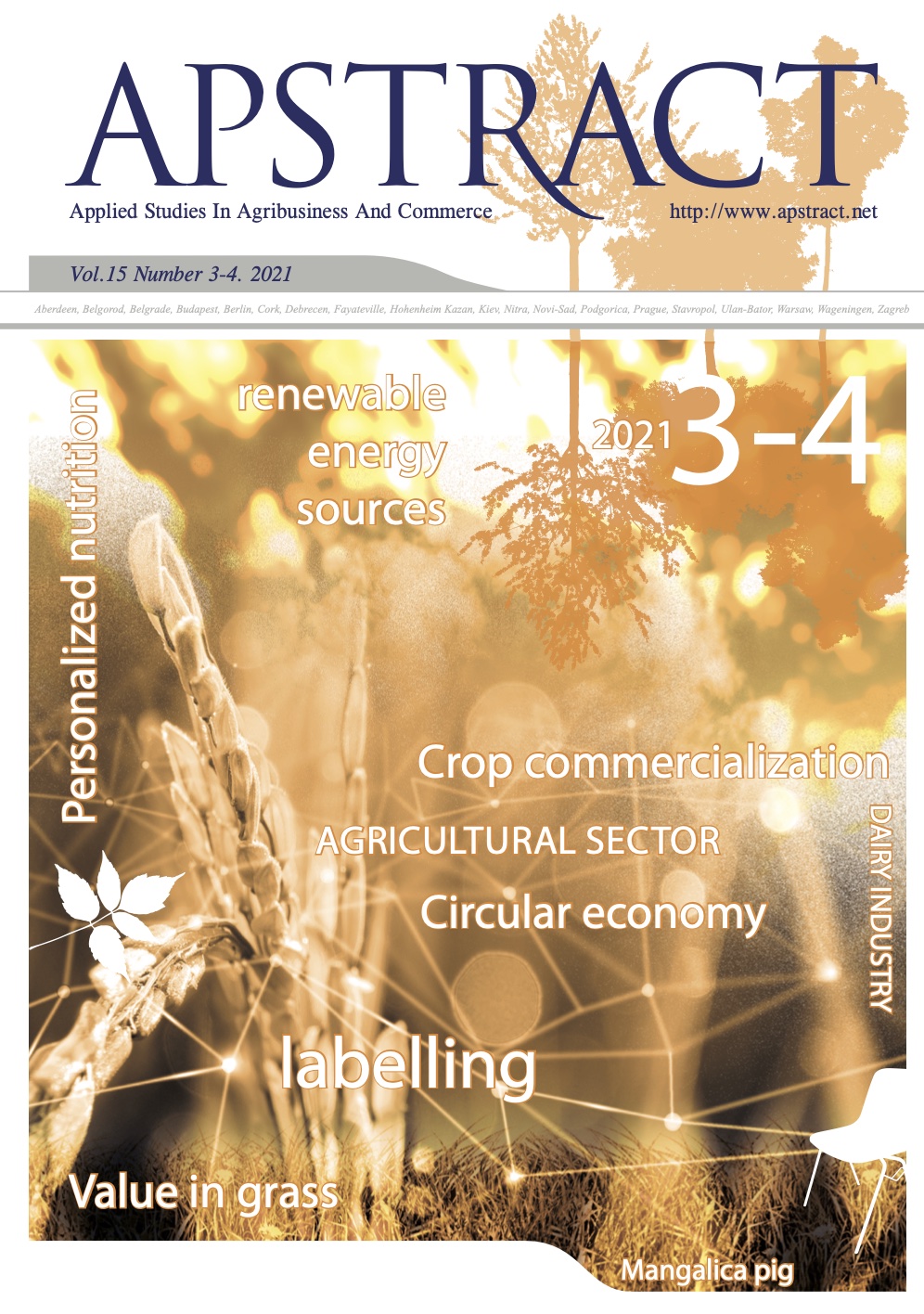Analysis of household crop commercialization in Nigeria
Authors
View
Keywords
License
Copyright (c) 2021 University of Debrecen, Faculty of Economics and Business, Hungary

This work is licensed under a Creative Commons Attribution-NonCommercial 4.0 International License.
How To Cite
Abstract
Nigeria is experiencing a gradual shift from subsistence to commercialized agriculture, thereby increasing involvement and activities at different nodes of agribusiness. Participation of farmers in markets is an important determinant of well-being and development, and one of the pathways towards economic growth. This study analysed household crop commercialization in Nigeria. The secondary data used were the General Household Survey (GHS, 2018) Wave 4. Data were analysed using descriptive statistics, household crop commercialization index (HCCI) and ordered probit regression model.
Mean age of Nigerian farmers was 50.04 years (±15.22), majority (85.68%) were male, married (82.51%), and 72.14% had formal education. Farming is viable in all the geopolitical zones and majority (87.64%) of the farmers were from the rural sector, holding a mean total plot size of 12.61(±15.63) hectares, and planted 3 crops on the average. The most produced crop categories are cereals (46.75%), tubers (20.70%) and legumes (19.00%); legumes and cereals are highest in the North, and tubers in the South. Subsistence households were 32.81% (HCCI=0), only 1.71% of the households were fully commercial (HCCI=100), while semi-subsistence households (0≤HCCI≤100) constitute 65.48%. Years of education (p<0.05) and crop production in North East and North West zones (p<0.01) constrain commercialization, while at p<0.01, crop production in the rural sector and the South zones, and increased land holding are the drivers of household crop commercialization in Nigeria.
Nigerian farming households are mainly semi-subsistence and are diversified in crop production. Nigeria relies more on market participation of the semi-subsistence households, through their marketable surplus, to feed her teeming population and for exports. Further attention on rural infrastructure development in all geopolitical zones and awareness creation on producing market oriented products will increase agribusiness activities. This will generate green decent jobs that will take unemployed youths off the streets of urban centres. This is in tune with the economy diversification bid and the new Nigeria Economic Sustainability Plan of the Federal Government of Nigeria.
JEL CODE – Q13


 https://doi.org/10.19041/APSTRACT/2021/3-4/3
https://doi.org/10.19041/APSTRACT/2021/3-4/3




